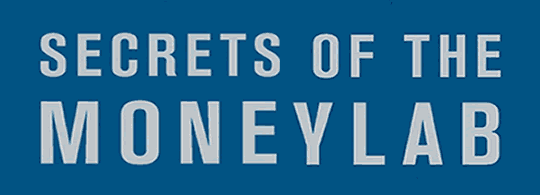Secrets of the Moneylab
Book Review: Secrets of the Moneylab: How Behavioral Economics Can Impact Your Business by Kay Yut Chen with Marina Krakovsky
Economics can be dry stuff – remember “macro,” “micro,” and supply/demand curves? Fortunately, Secrets of the Moneylab is a lot more fun than Econ 101 because it focuses not on theory but on how people really behave. Indeed, work done by behavioral economists has shown that predicting what people will do using the tools of traditional economics usually doesn’t work. Behavioral economics is a parent of neuroeconomics and I expect that the fields will gradually converge as neuroeconomics grows in stature. (Neuromarketing, I suppose, is a sort of stepchild of neuroeconomics.)
This book deals with many of the same topics we frequently discuss here at Neuromarketing: fairness, trust, reciprocity, and reputation, for example.
There’s a mix of compiled research as well as first-hand anecdotes from Hewlett-Packard, where Chen is the Lead Economist at HP Labs. HP actually conducts its own behavioral economics research to develop effective pricing and product strategies.
One such anecdote involves a study on how to penalize retailers who advertise a product below its MAP (minimum advertised price). (In the U.S., it’s illegal for a manufacturer to establish a minimum saleprice, but they can set a minimum advertised price and take actions against dealers who violate that policy.)
Chen and his team set out to find the best way to discourage retailers from MAP violations. Their old policy of cutting off the supply of product to the violator was severe and effective, but it also cut into HP sales and forced the violator to promote competitive products.
They devised a game in which the subjects played the part of resellers and were rewarded for maximizing their own profits. The first alternate strategy tested cut off advertising funds for the specific product for multiple sales periods following the violation. Although in hindsight it seems obvious, there was a surprise result: the strategy was effective until the product neared the end of its life cycle. The “reseller” game players saw that the closer the product was to being phased out, the lower the penalty for a MAP violation was. So, they boosted their own sales by dropping the advertised price for end-of-cycle products and incurred minimum penalties.
Chen found that a strategy that combined retroactive elements and also penalized sales immediately following the MAP violation was far more effective. In essence, the more units sold via the cheap price, the higher the penalty incurred. This strategy was eventually built into the terms of HP contracts with retail giants like Walmart and Best Buy.
Overall, Secrets of the Moneylab is packed with descriptions of lab findings with real-world applications. In multiple cases, lab results were instrumental in shaping HP policies and pricing; finding ways that particpants could “game” a system were far cheaper to correct when discovered in a lab setting than after a national rollout.
I’ll share some additional insights from the Moneylab book in later posts but highly recommend the book for readers who want to better understand the psychology of how people part with their money. The book includes detailed endnotes for readers who want to delve more deeply into a particular topic.
Amazon Link: Secrets of the Moneylab: How Behavioral Economics Can Improve Your Business
Kindle Version: Secrets of the Moneylab: How Behavioral Economics Can Improve Your Business

